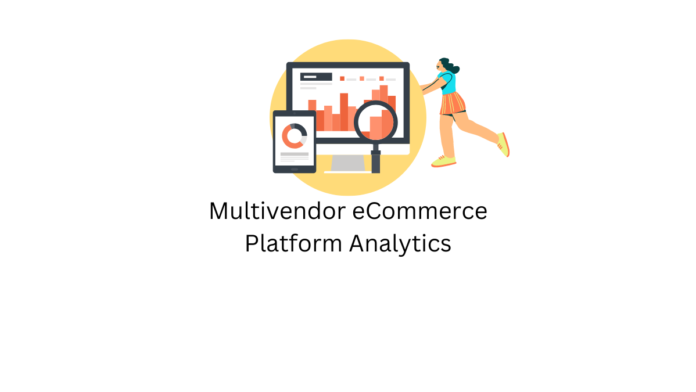Throughout the last ten years, the rapid evolution of technology has resulted in significant changes in customer shopping behavior and thought processes. As a result, the eCommerce industry has had to adjust and adapt at this time constantly.
With this evolution came the need for reliable and insightful data analysis in eCommerce. It was essential to keep pace with the transition and make informed decisions. Therefore, the gathering and breakdown of digital stores’ data became important for entrepreneurs. Whether you plan on multivendor eCommerce website development or a multivendor eCommerce marketplace solution, these tips will work well for you.
Why is eCommerce Website Analytics so Important Today?
Well, the data analysis of digital business sites is essential for helping businesses:
1. Gain insights into email campaign performance and buyer base growth.
2. Gain new customers and maintain them.
3. Collect customer shopping data anytime they shop.
4. Communicate with customers freely and easily.
5. Enhance the website with beneficial data information.
Before anything else, it’s essential to understand the importance of analytics, the correct tools to take advantage of when tracking metrics and KPIs, and everything needed to track and analyze the data.
When you run an online store, you should keep track of certain information about what your customers are doing. This information can help you see how well your store is doing and where it needs to improve. Some examples of this information are:
Conversion Rate and Sales Performance
When people visit your online store, it’s essential to know how many of them are buying something. It is called the conversion rate. For example, if you have 1000 visitors to your store in a month and only one person buys something, the rate of conversion is 0.1%.
If the conversion rate is low, it means you’re not making many sales and might be losing money. That’s why analyzing the number of sales and the conversion speed is crucial. This information can help you figure out what changes you need to make your store encourage more people to buy things.
Website Traffic


The more people who visit your online store, the more chances you have to make sales. For example, if you’ve got 1000 visitors and a conversion rate of 10%, you make 100 sales. But if you increase your site traffic to at least 10,000 visitors, you could make 1000 sales with a similar conversion rate.
To enhance the number of visitors to your website, you can promote your products on social media, optimize your product pages for search engines, and work with influencers.
Analyzing your web traffic data is essential for the future of your online store. By understanding how many people are visiting your site, where they’re coming from, and what they’re doing on your site, you can make changes to improve your sales and make more money.
The Average Number of Orders
Let’s say there are two online stores, Store A and Store B. Store A gets 500 visitors daily and has a conversion rate of 2%, resulting in ten daily sales. Store B gets 1000 visitors daily and has a conversion rate of 1%, resulting in 10 sales daily.
Now, let’s say the Standard order value for Store A is $20, while the standard order value for Store B is $30. It means that Store B is generating more revenue per sale, even though they have the same daily sales as Store A.
To increase revenue, online store owners can focus on improving the standard order value by encouraging customers to add more items to their cart or offering discounts for larger purchases. In addition, tracking and analyzing the standard order value can help online store owners make strategic decisions to increase revenue and profits.
Email Conversion Rate


Email opt-ins are crucial for any online business to grow its email list and reach potential customers. Therefore, monitoring the email subscription rate is vital to understand how effective the opt-in process is on the website.
The conversion rate can be tracked manually through tools used for email marketing or automatically through Google Analytics by putting in a code for tracking on the Thank You page of the opt-in process. By tracking the conversion rate, eCommerce business strategies can optimize their opt-in process and improve their email marketing strategies to generate more sales.
Customer Retention Rate
It is also important to analyze at what point the customers are abandoning their carts.
It can help in identifying specific areas of improvement in the checkout process. For example, if most customers abandon their carts at the payment stage, there might be an issue with the payment gateway or the payment process itself.
By tracking the rate of buyers leaving goods in the cart and identifying the reasons behind it, e-commerce businesses can improve their checkout process and reduce the number
of abandoned carts, ultimately leading to higher sales and revenue.
Repeat Purchase Rate
Customer Lifetime Value (CLV) is a crucial metric for any e-commerce business. It represents the total amount a customer is likely to spend on the website over their lifetime as a customer.
Increasing the standard order value can improve the consumer lifetime value, which is essential in maintaining and building a robust and sustainable bond with
your clientele. In addition, strong brand loyalty also helps to enhance the value of a customer over their lifetime, leading to better results from every buyer of your online store.
Analyzing the Customer Lifetime Value can also help you estimate promotion expenses and determine the strategy for customer acquisition for future business plans. Overall, tracking the CLV analytics is essential for the success and growth of any e-commerce and marketplace site.
Customer Retention
Indeed, customer retention is crucial for any digital business to sustain and grow over time. Retaining existing customers is more cost-effective than acquiring new ones, requiring fewer resources and effort. Additionally, returning customers tend to spend more and are more likely to refer others to your e-commerce site.
To improve customer retention, e-commerce businesses can focus on providing excellent customer service, offering personalized promotions, sending targeted email campaigns, and implementing loyalty programs. In addition, tracking and analyzing customer retention rates can help businesses identify areas of improvement and adjust their retention strategies accordingly.
Therefore, paying attention to customer retention metrics is essential for the long-term success of an e-commerce site.
For successful and insightful data analysis results, one can;
Invest in Analytics Tools
You should invest in great analyzing tools to get the most out of your data. These tools will help you to collect, store, analyze, and visualize your data. Some of the popular tools for e-commerce platforms include:
· Google Analytics
· Mixpanel
· Kissmetrics
· Amplitude
· Heap Analytics
You will also track user behavior, measure your marketing campaigns’ impact, and identify improvement areas.
Use Visualization Tools
Data visualization tools like charts, graphs, and heatmaps effectively communicate insights and make data more accessible to stakeholders. In addition, these tools can be used to create reports and dashboards that provide a quick and easy overview of key metrics. The tools can also work well in a multivendor eCommerce marketplace solution.
Visualization tools can help you identify trends and patterns that are not immediately apparent from raw data. They can also help you to communicate your findings to stakeholders more effectively.
Developing a Multivendor Website
Below are steps you can follow for effective multivendor eCommerce website development.
Step 1: Choose the Right Platform
The first step in creating a multivendor website is to choose the right platform. Many platforms, such as Shopify, WooCommerce, Magento, and more, are available for creating a multivendor website. However, we recommend using a platform that explicitly supports multivendor functionality for a multivendor website.
Step 2: Install and Configure the Platform
Once you have chosen the platform, the next step is to install and configure it. This process will vary depending on the platform you choose. However, most platforms have detailed installation and configuration guides to help you through the process.
Step 3: Set up Vendor Accounts
After installing and configuring the platform, you must set up vendor accounts. It will allow vendors to create their storefronts and manage their products. Depending on the platform, you may need to install additional plugins or extensions to enable vendor functionality.
Step 4: Customize Your Website
Once vendor accounts have been set up, you can customize your website to match your brand. It includes choosing a theme, designing your homepage, and adding content to your website.
Step 5: Add Products
After customizing your website, it’s time to add products. You can either add products yourself or allow vendors to add their products. Depending on the platform, you may need to configure product settings such as pricing, shipping, and taxes.
Step 6: Launch Your Website
After adding products, you are ready to launch your website. However, test your website thoroughly before launching to ensure it functions properly. Consider marketing your website to attract customers.
Step 7: Manage Your Website
Once your website is live, you need to manage it. It includes managing vendors, processing orders, handling customer support, and optimizing your website for search engines.
Conclusion
eCommerce analytics is crucial to any online business. Analyzing metrics such as sales and conversion rate, website traffic, the average number of orders, email conversion rate, customer retention rate, repeat purchase rate, and customer lifetime value can help businesses make informed decisions about their marketing and sales strategies.
By tracking and analyzing these metrics, eCommerce businesses can improve customer experience, increase revenue, and grow.
With the help of reliable and insightful data analysis, online entrepreneurs can adapt to the ever-changing trends in eCommerce and make informed decisions that help them stay ahead of the competition.











